WWII August 1944 Operation Dragoon (D-Day Invasion of Southern France) Handmade U.S. Liberation Flag
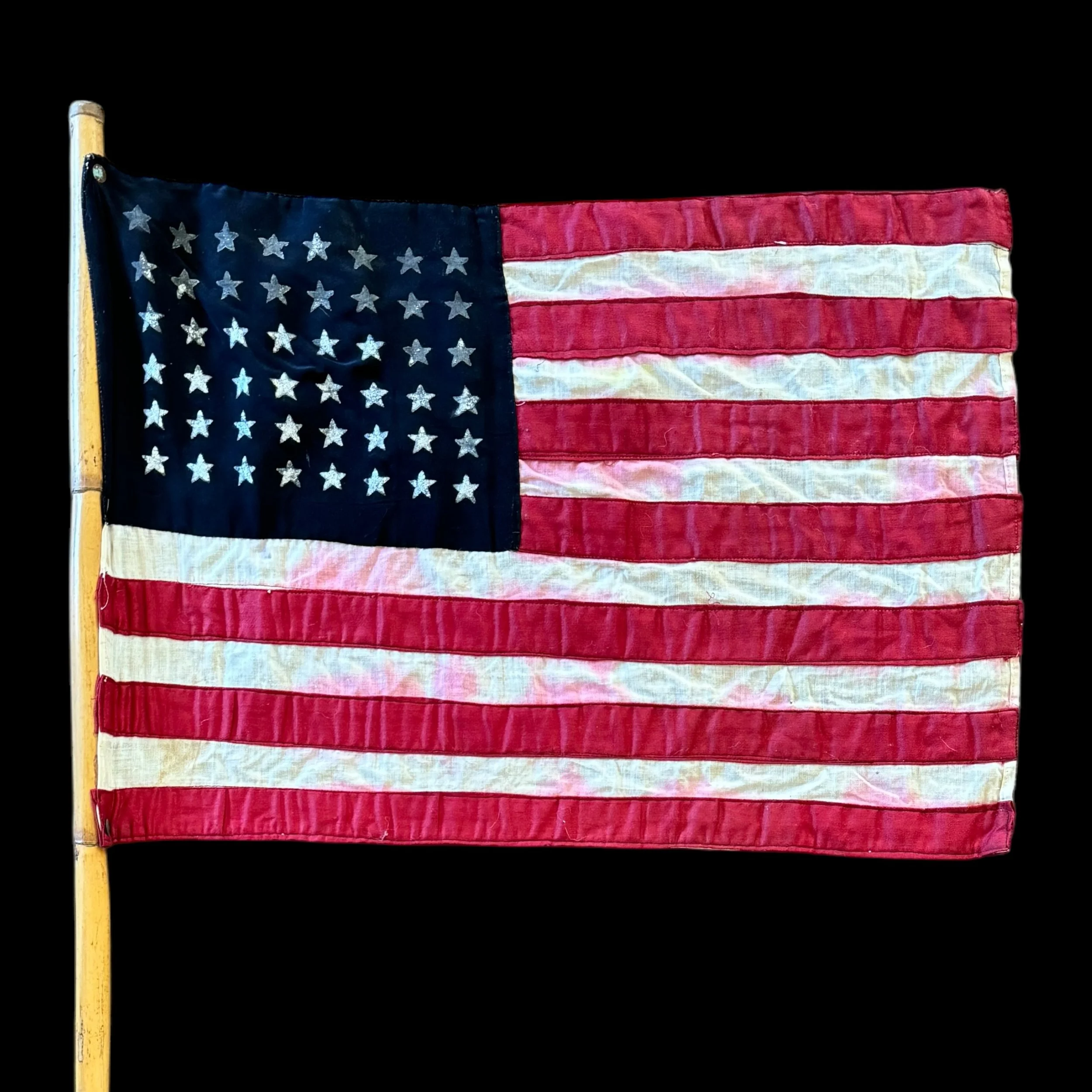

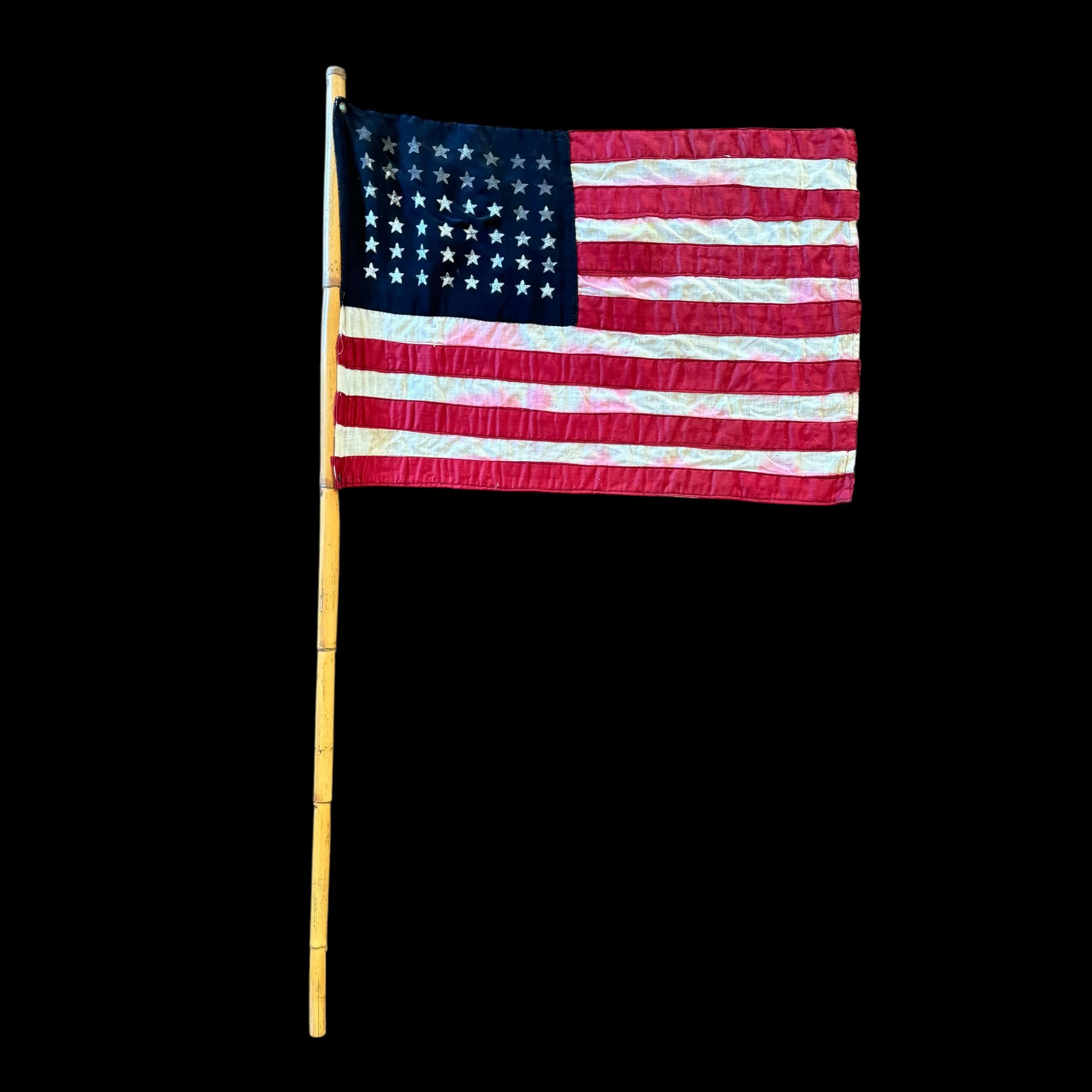
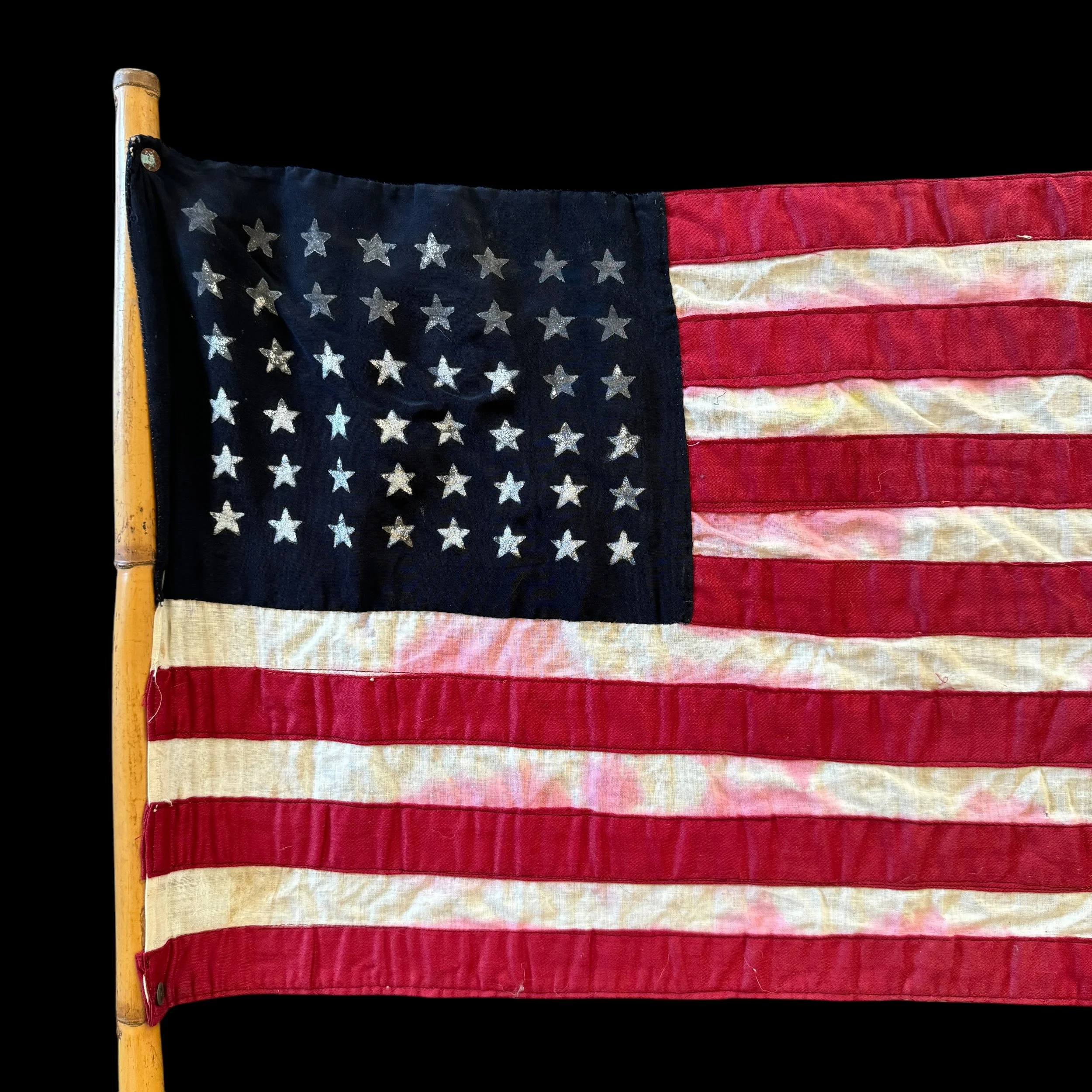
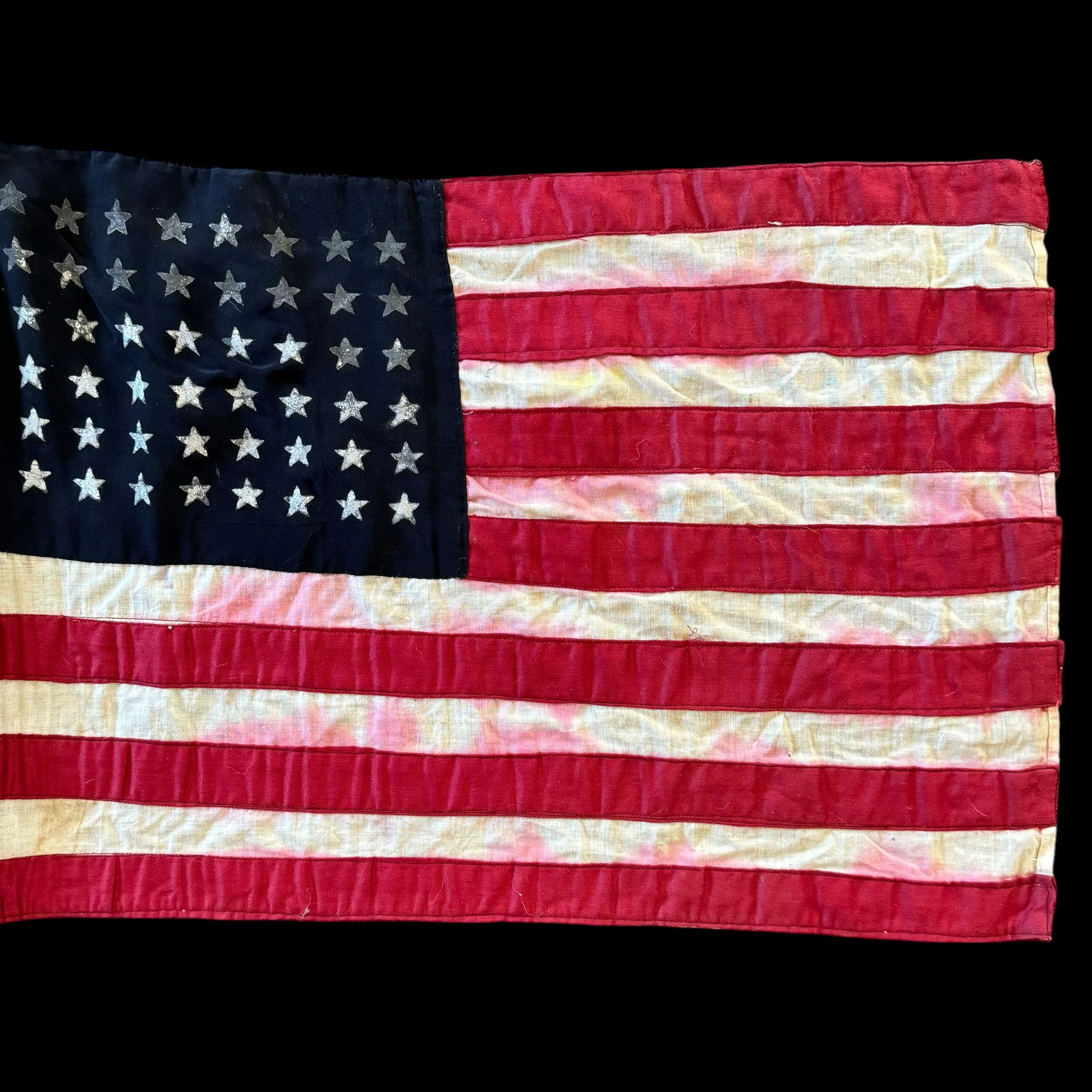

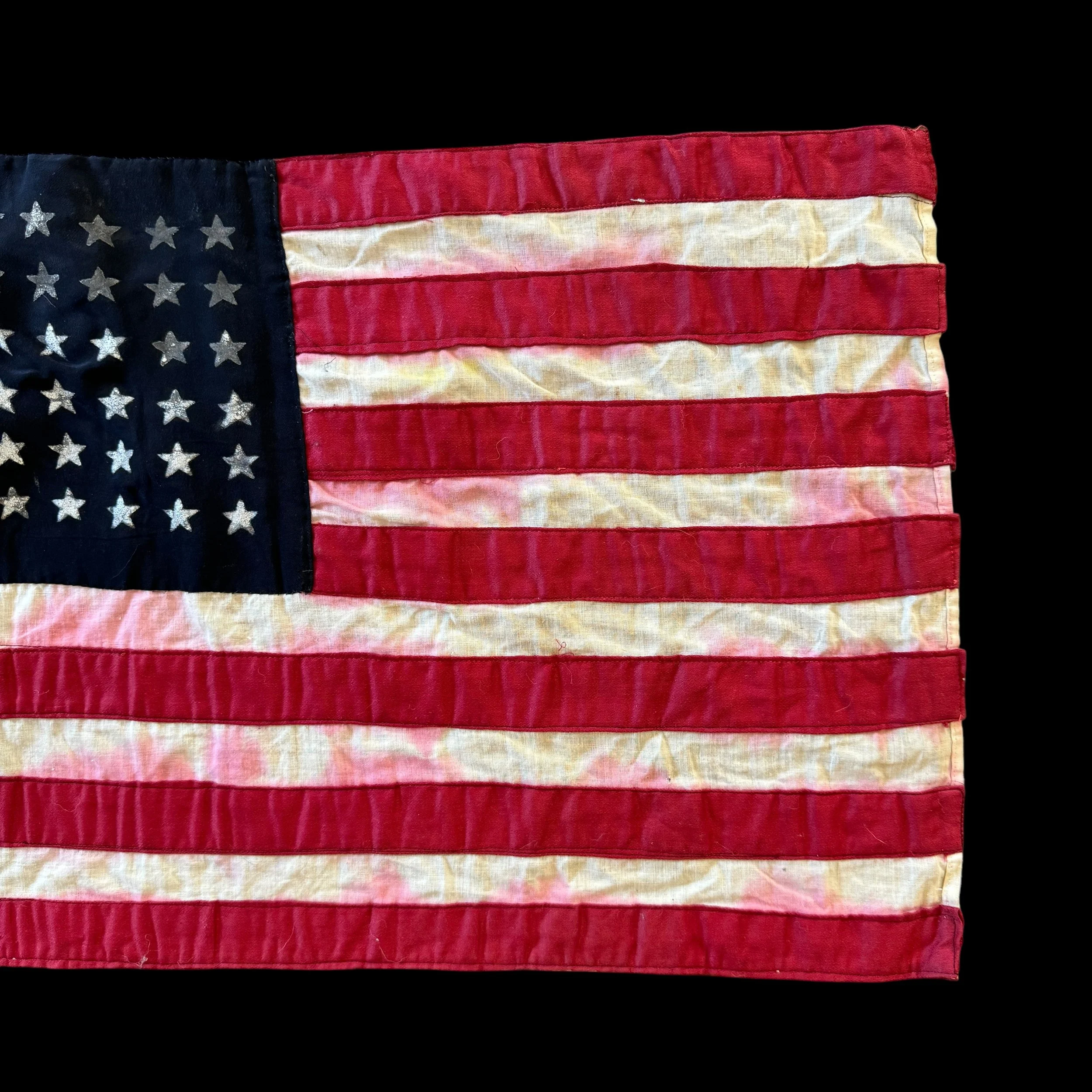
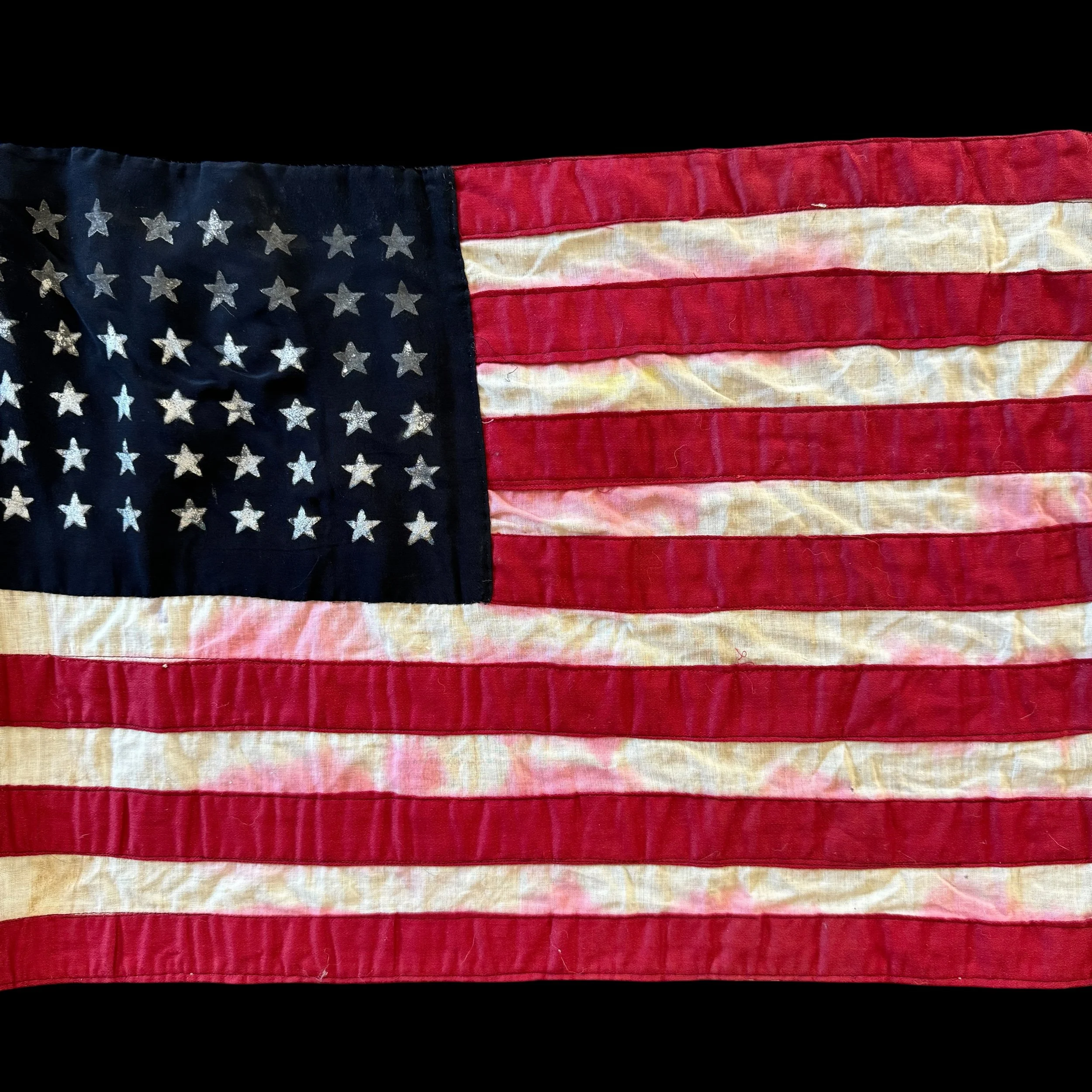
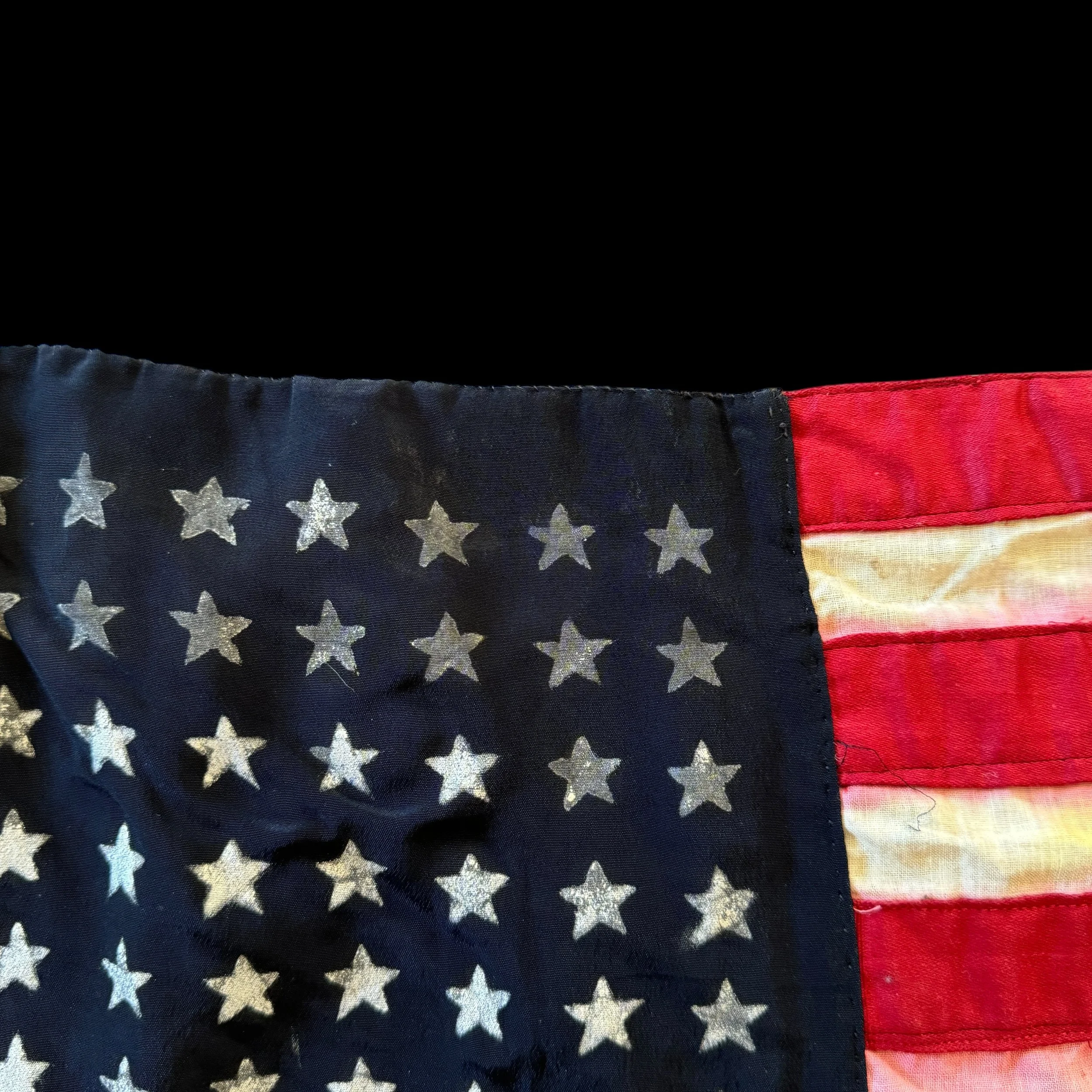


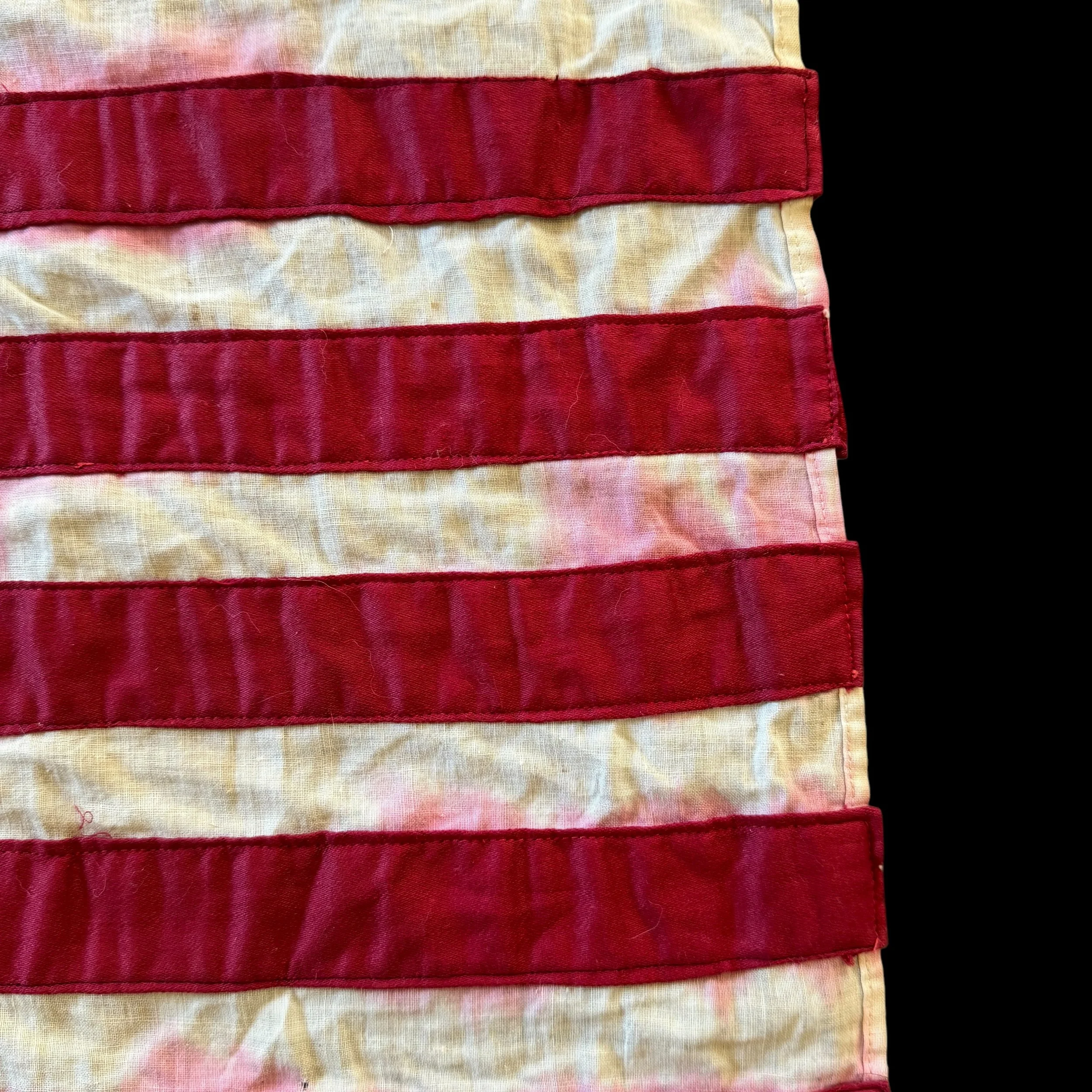
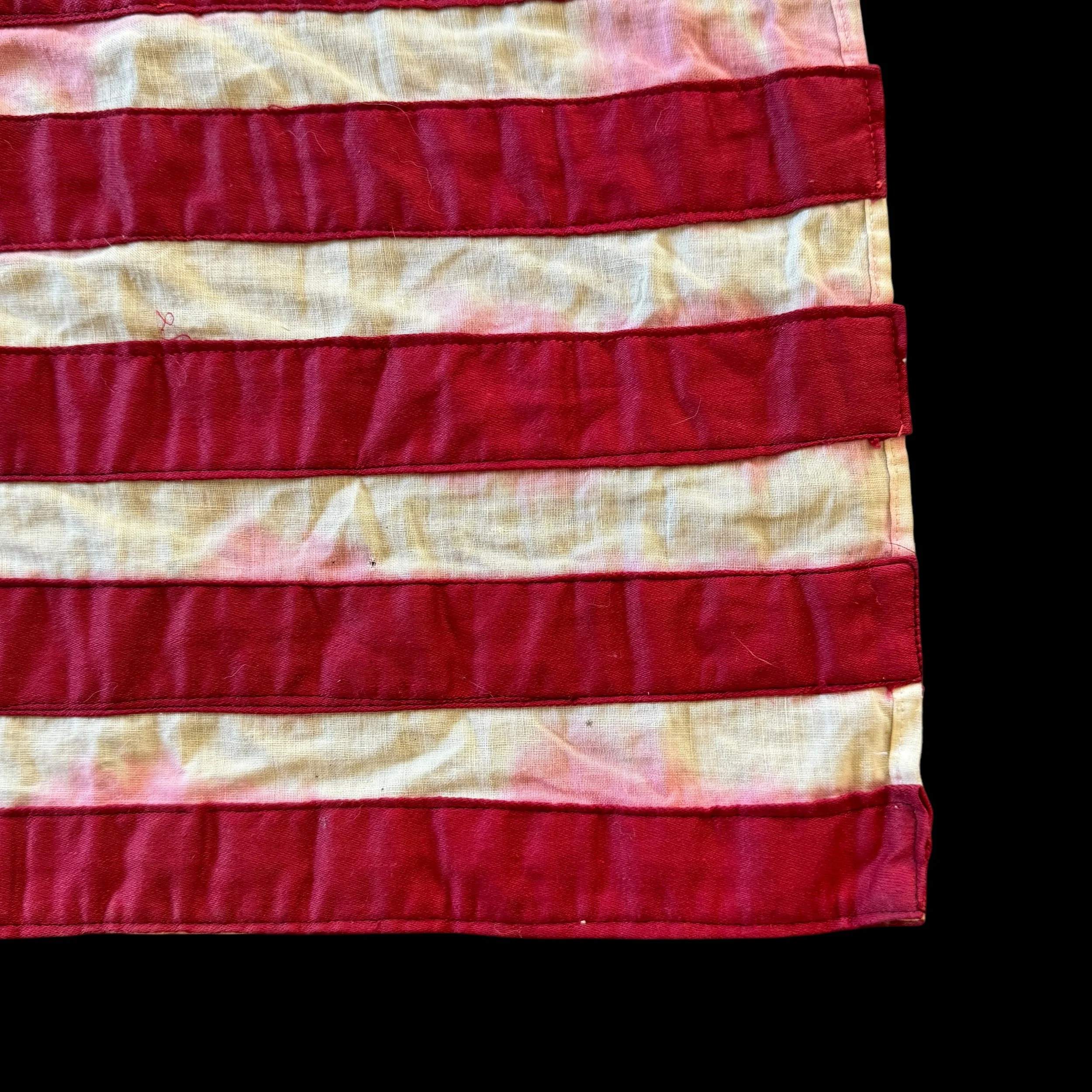
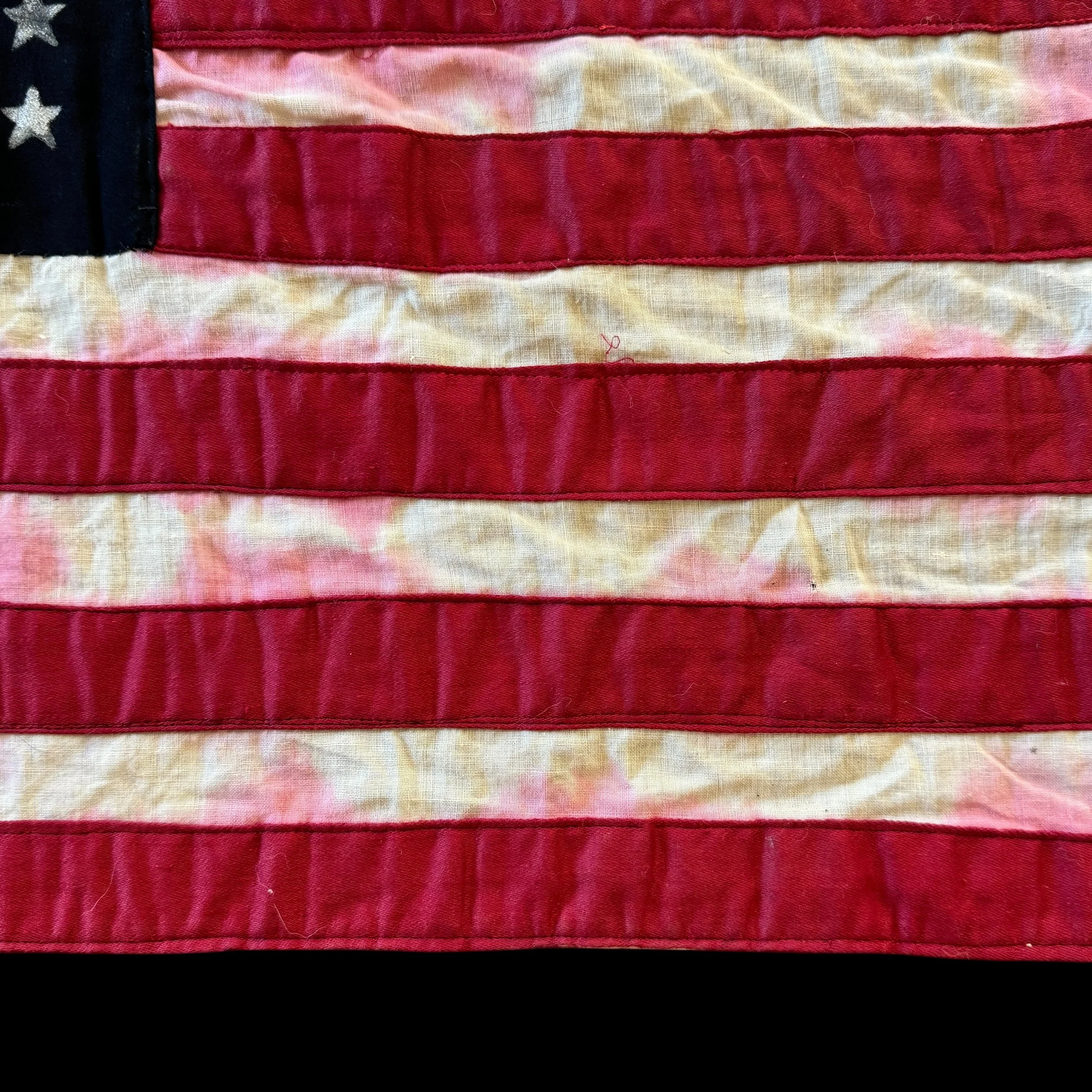
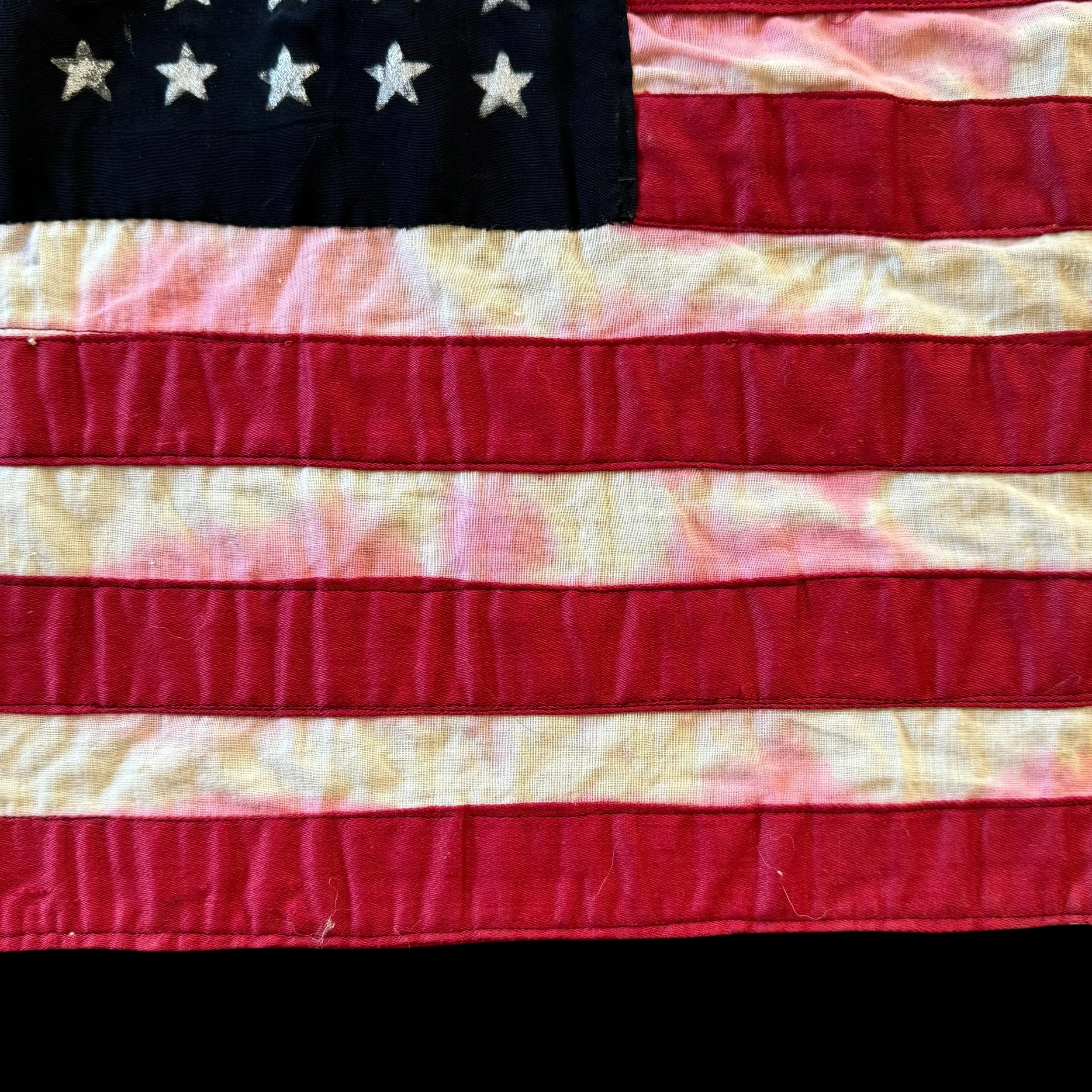
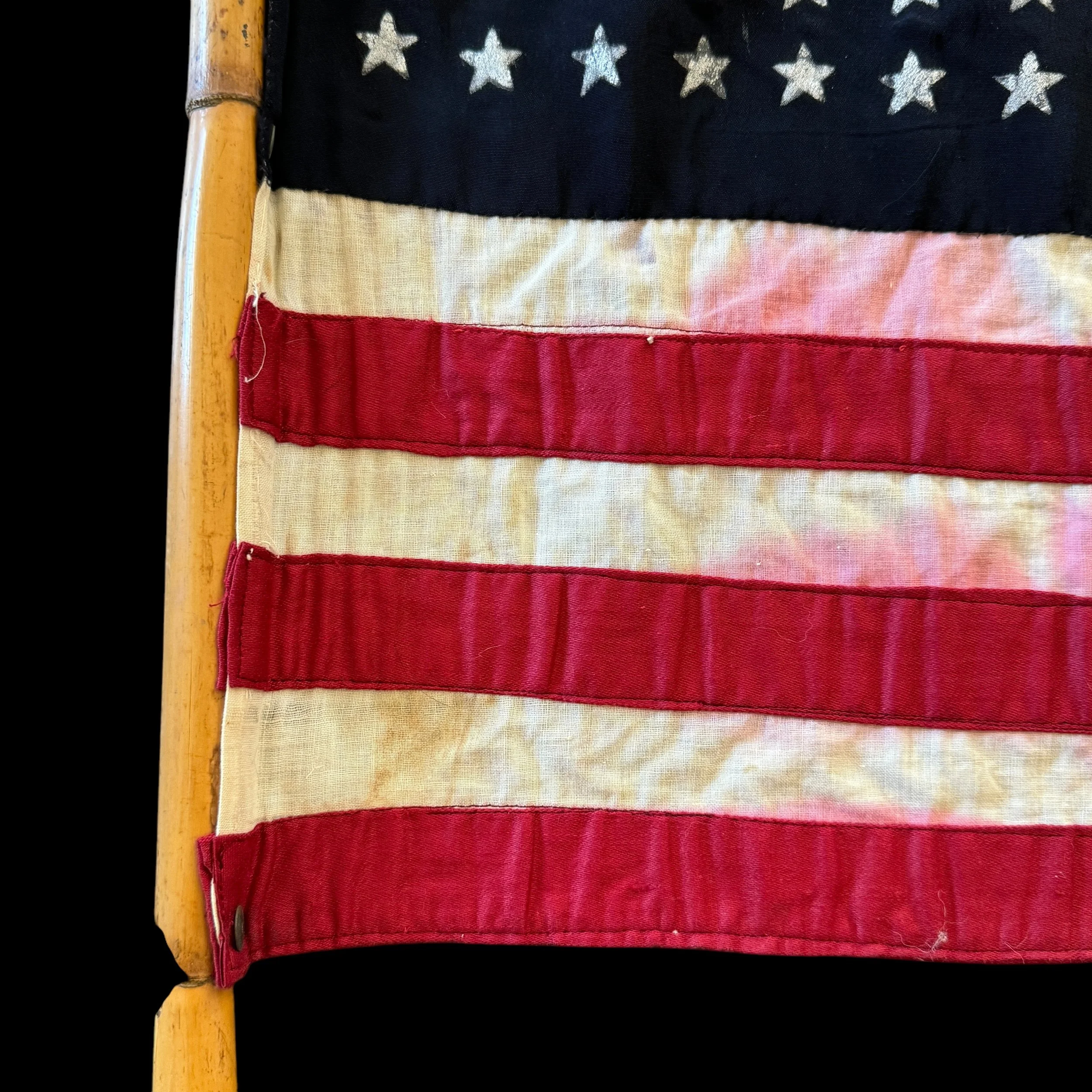
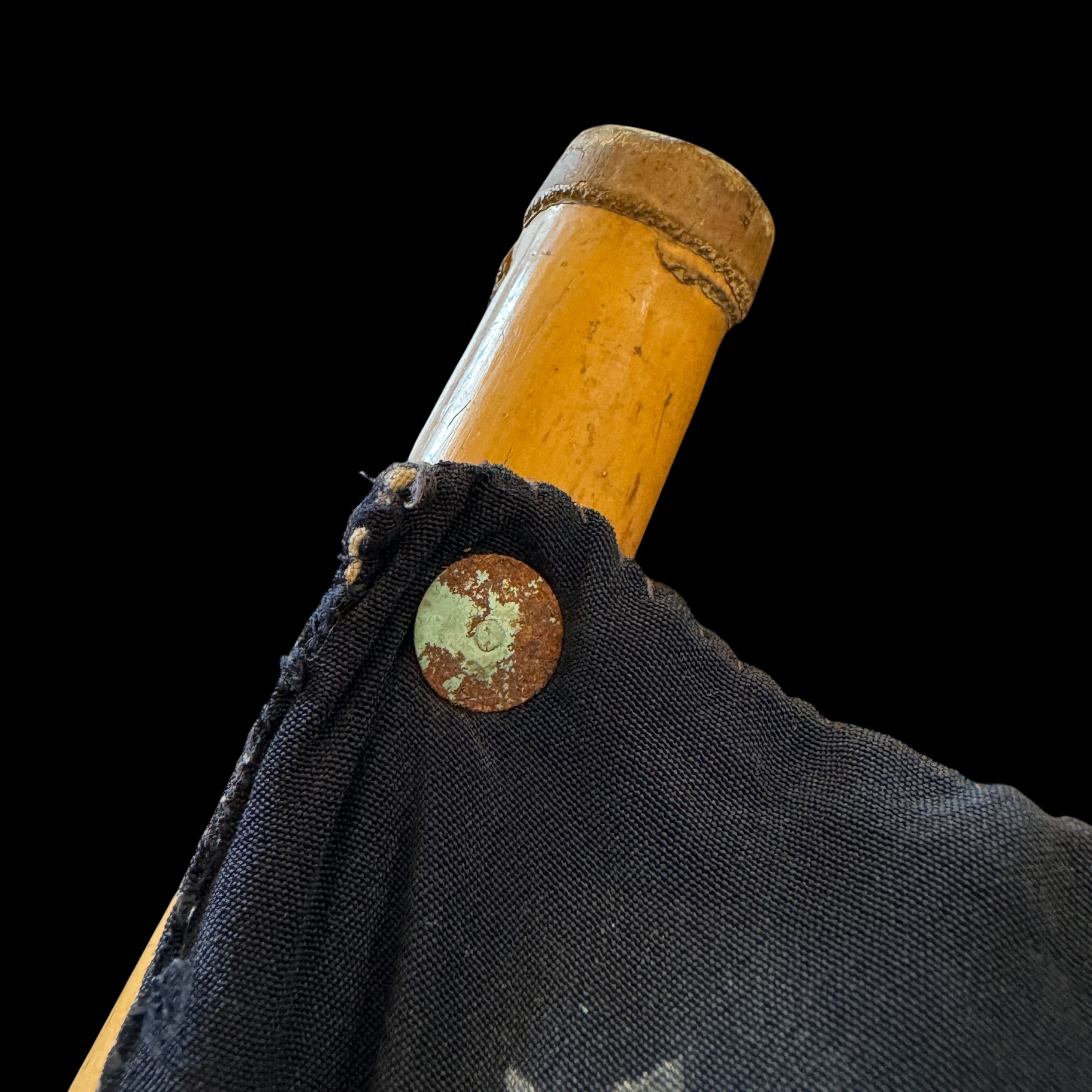

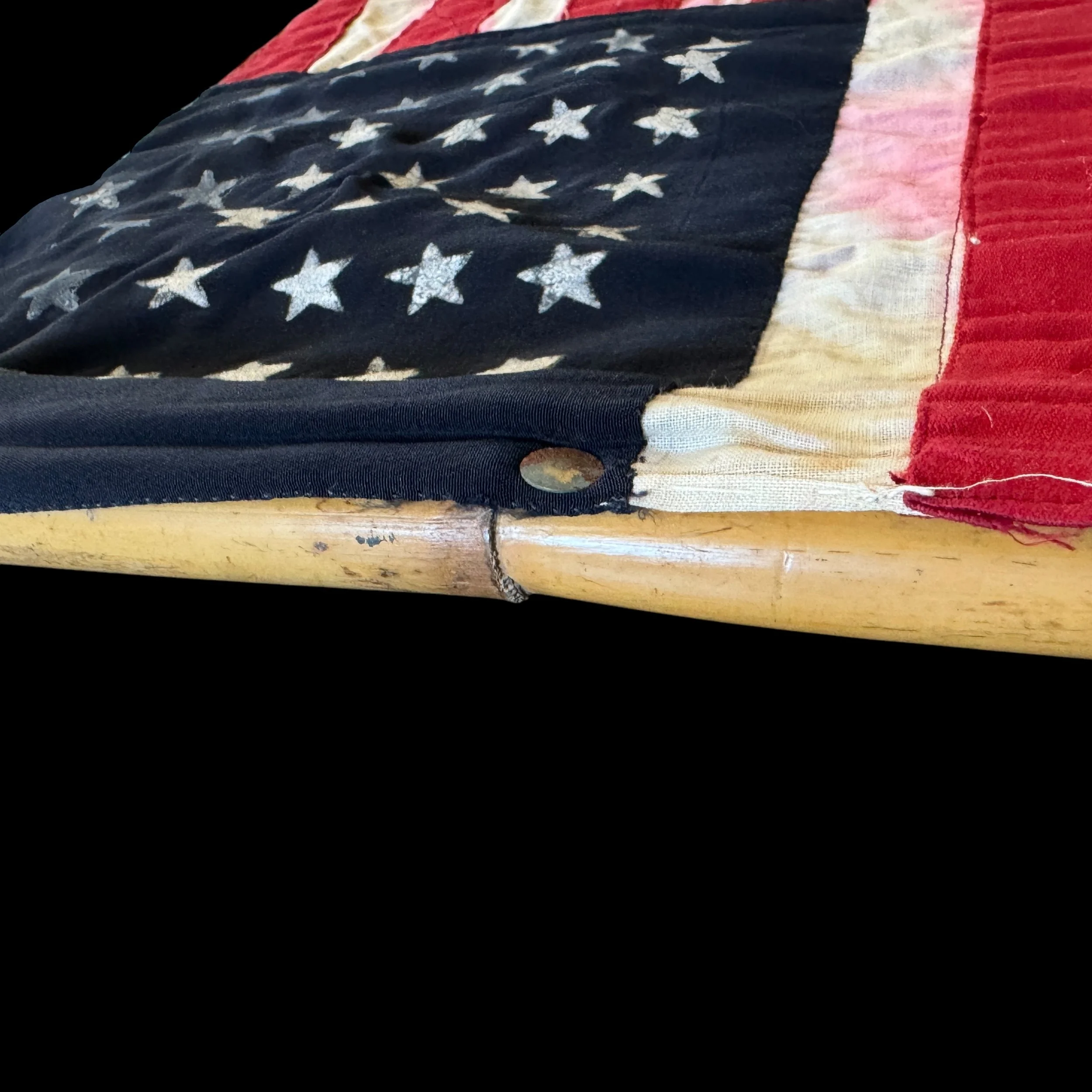
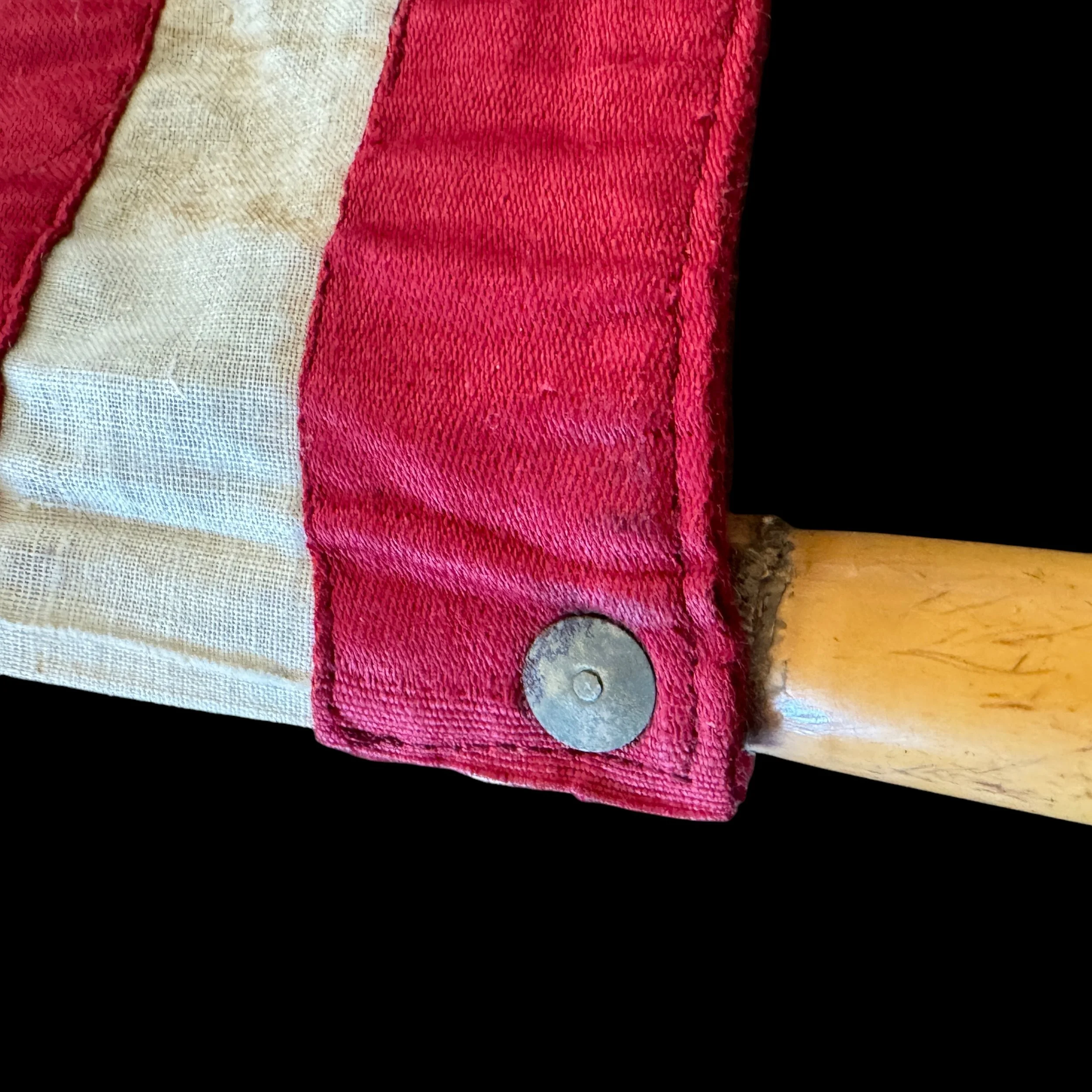

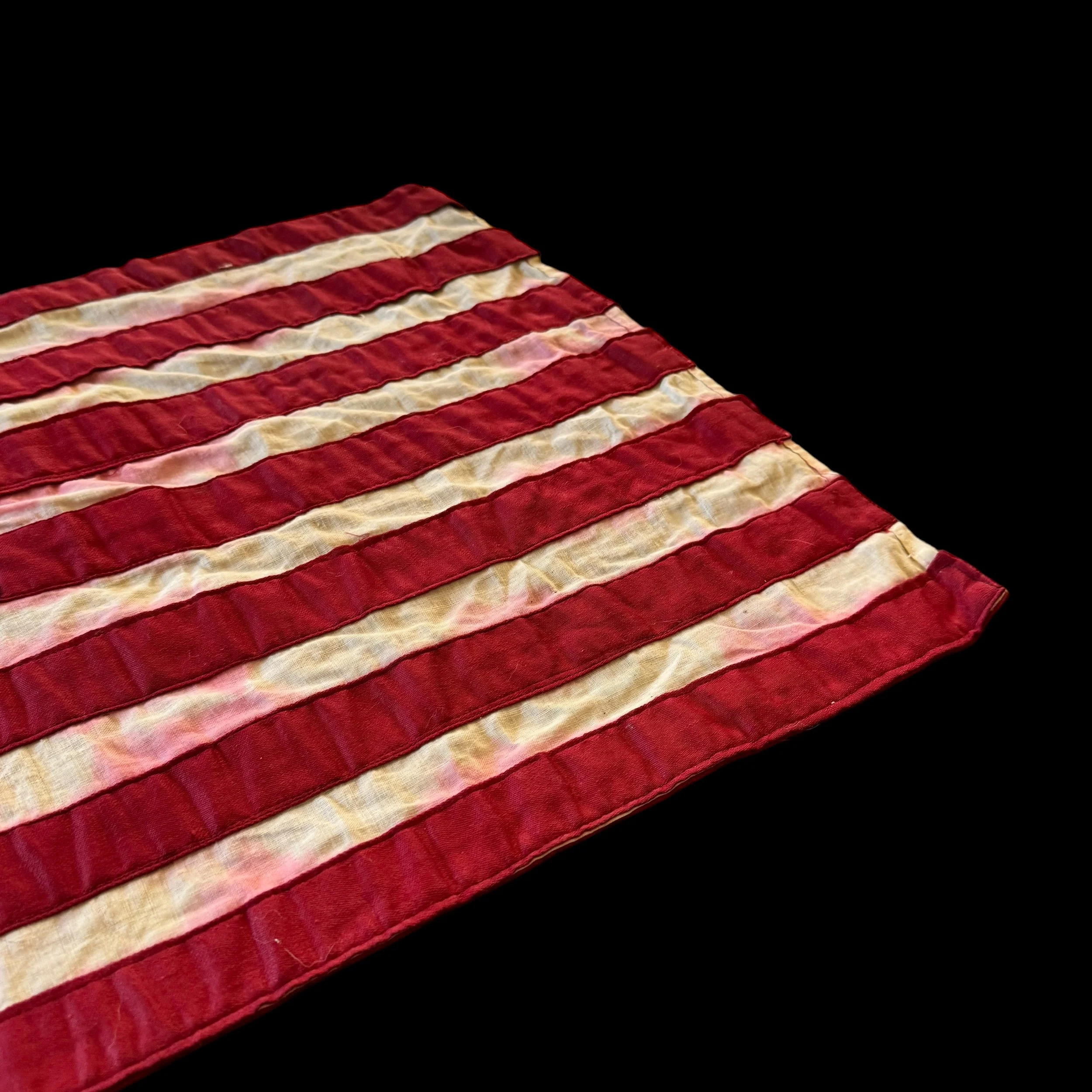


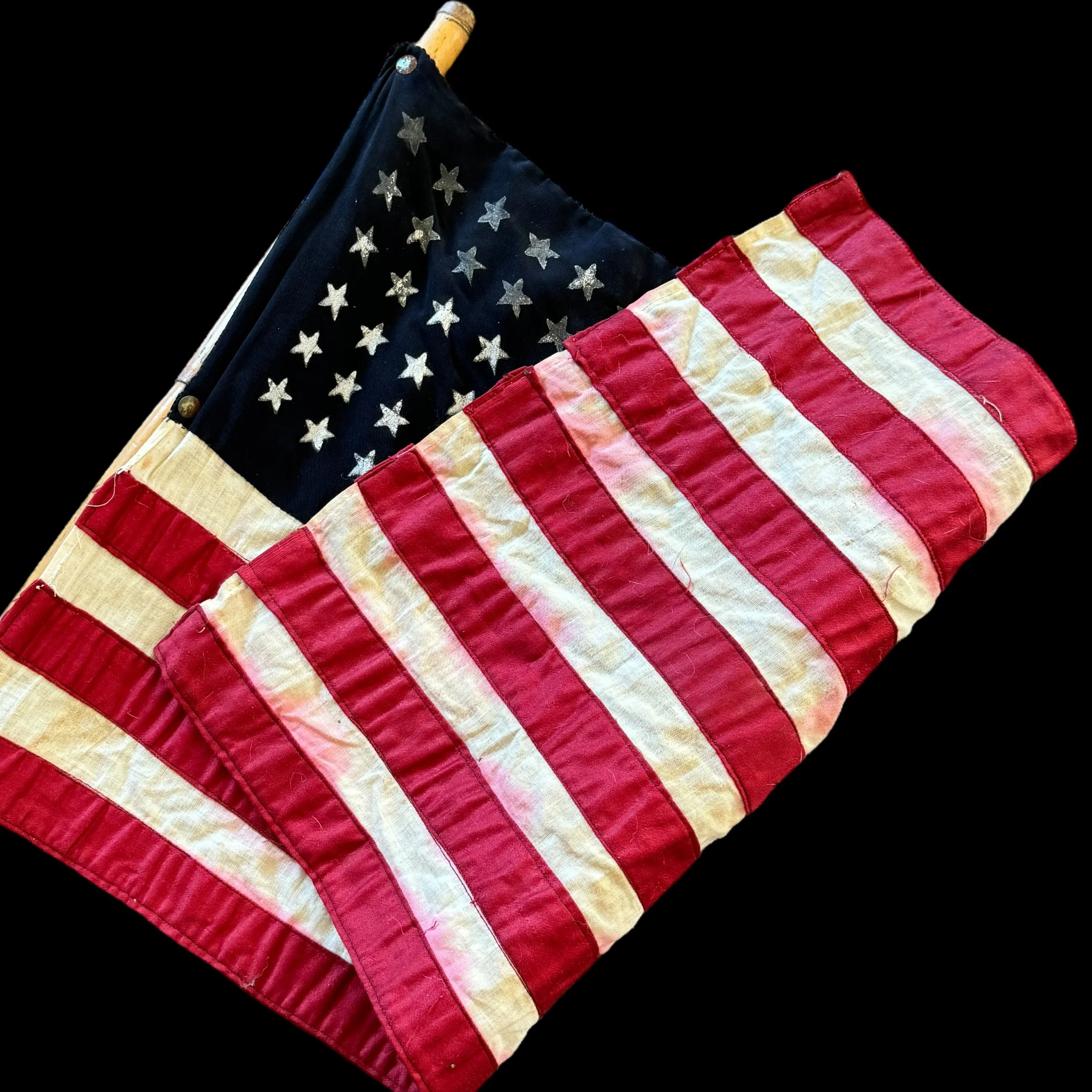
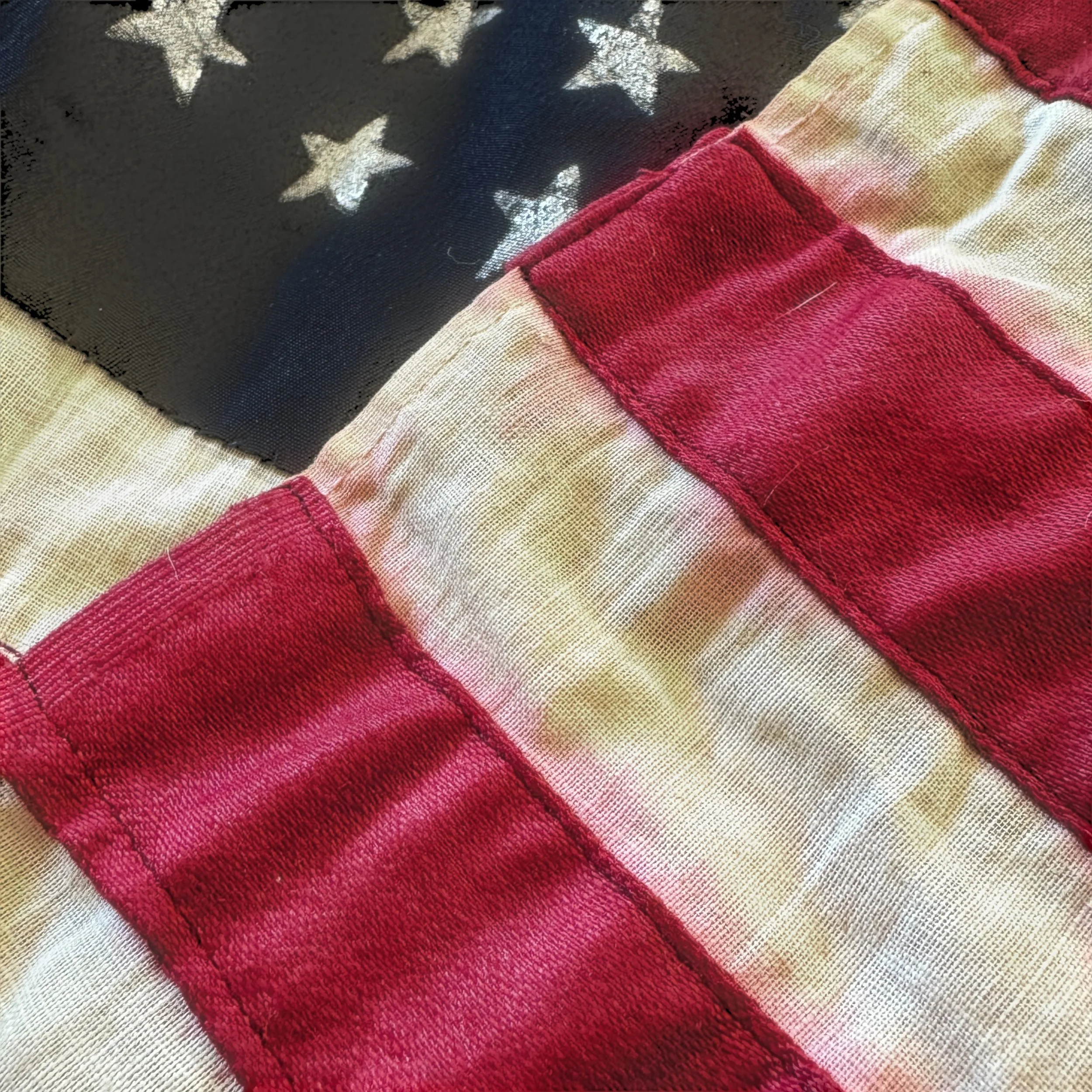

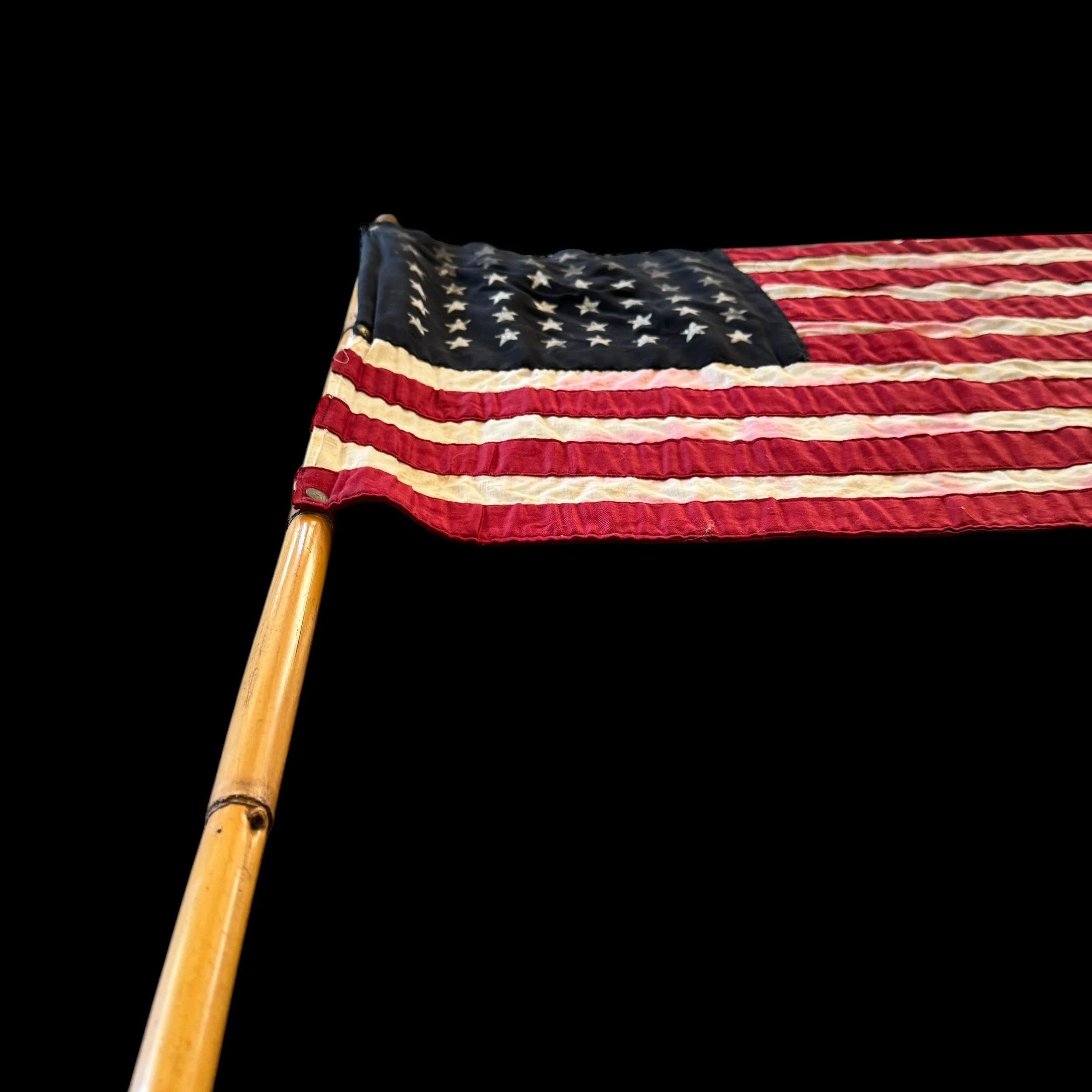
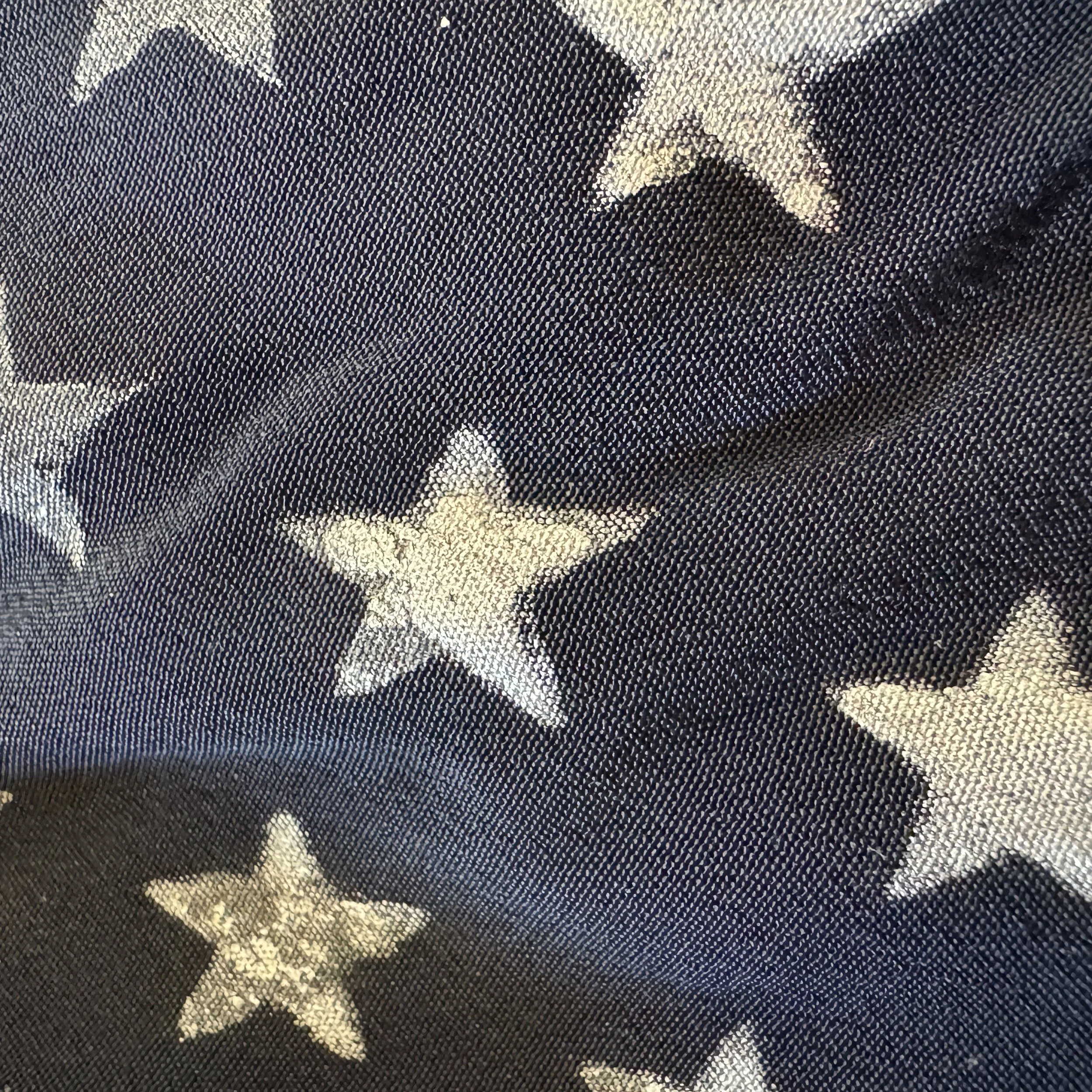
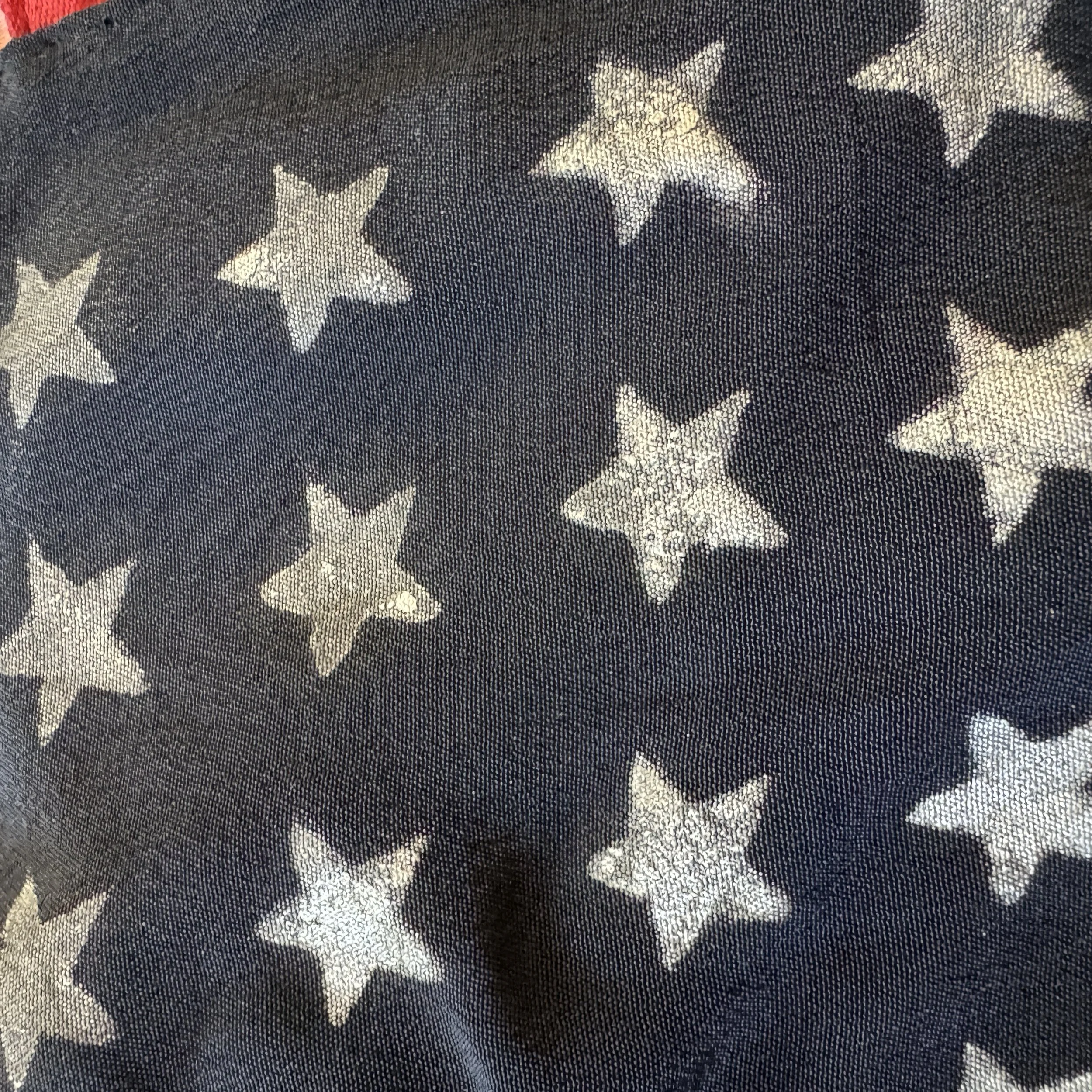
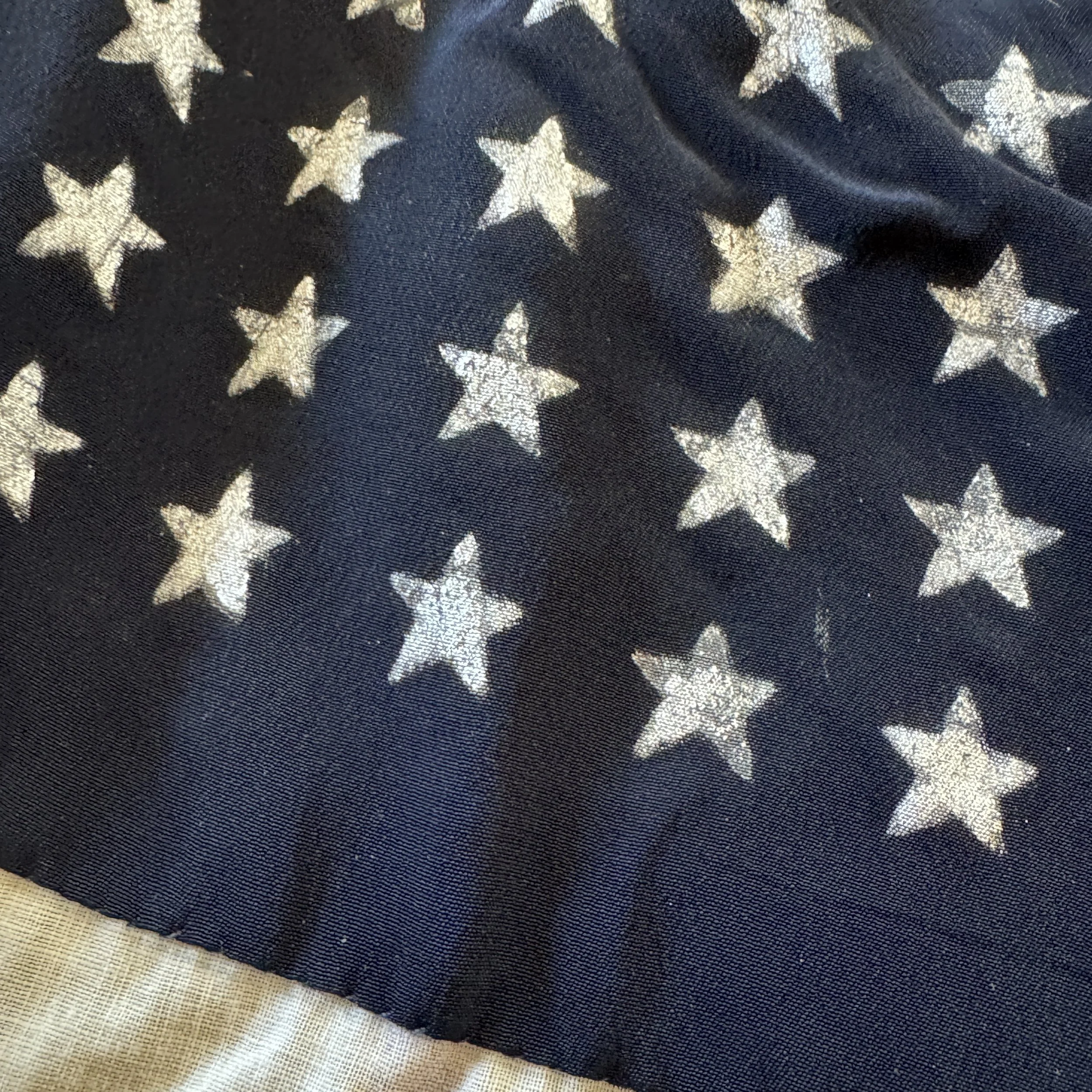
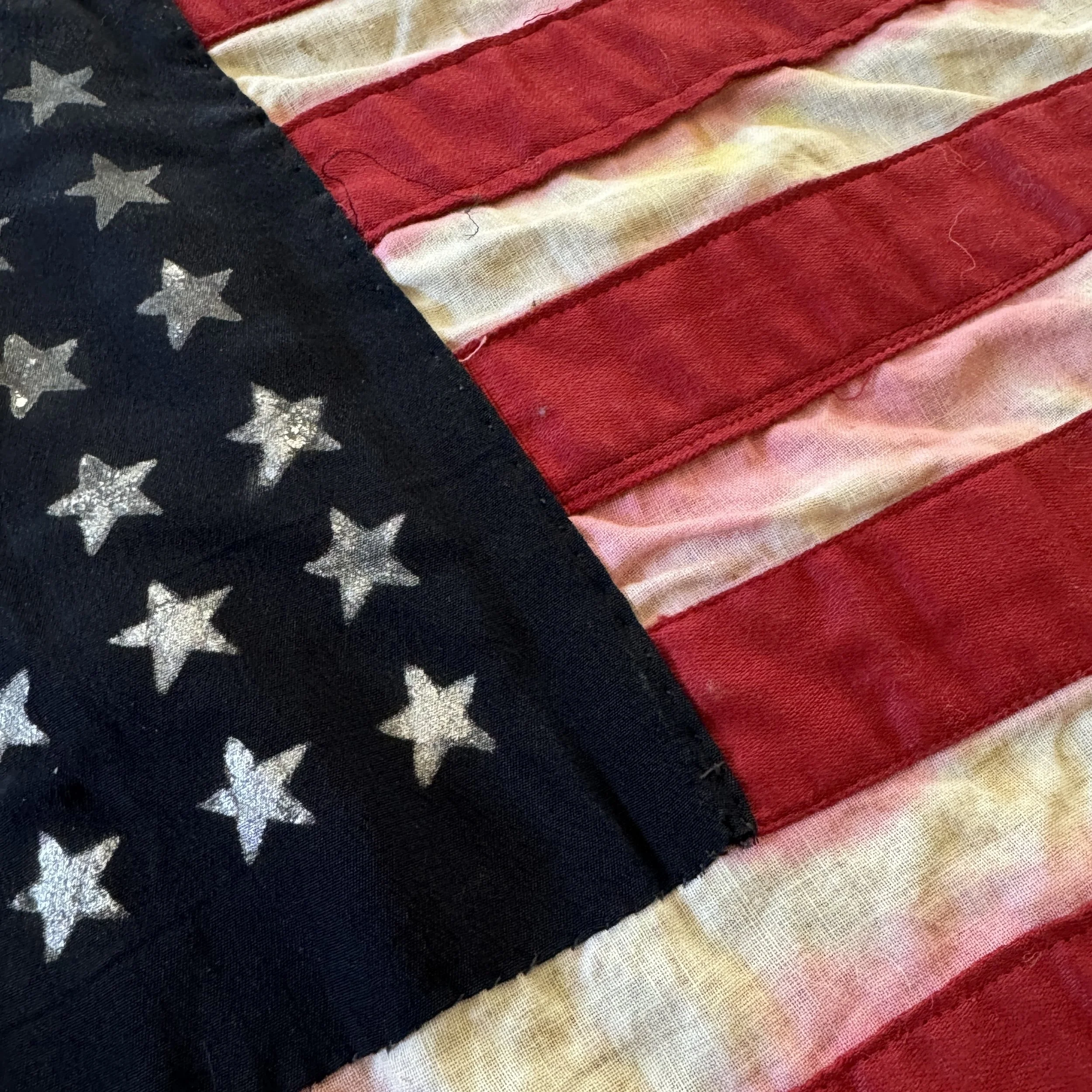
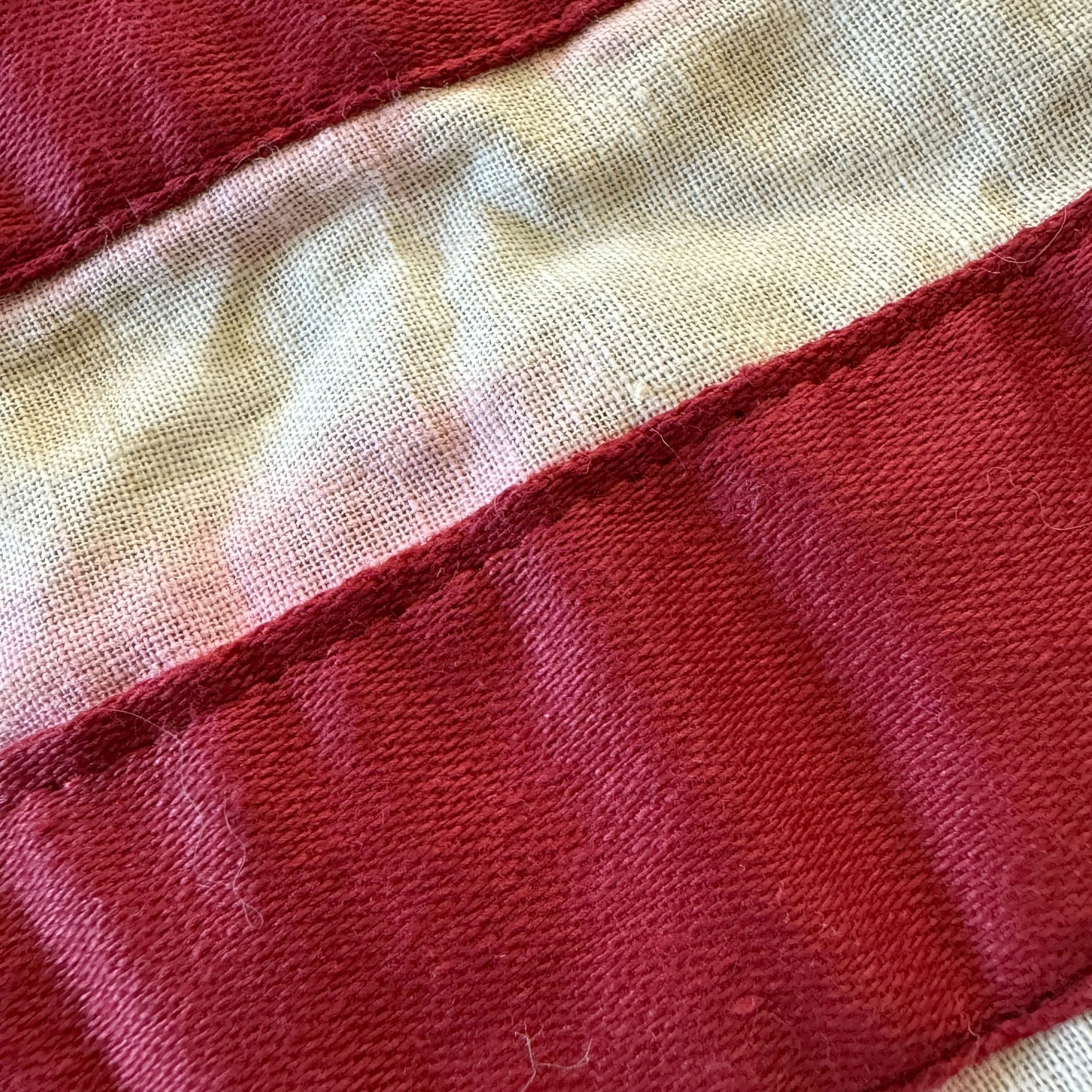
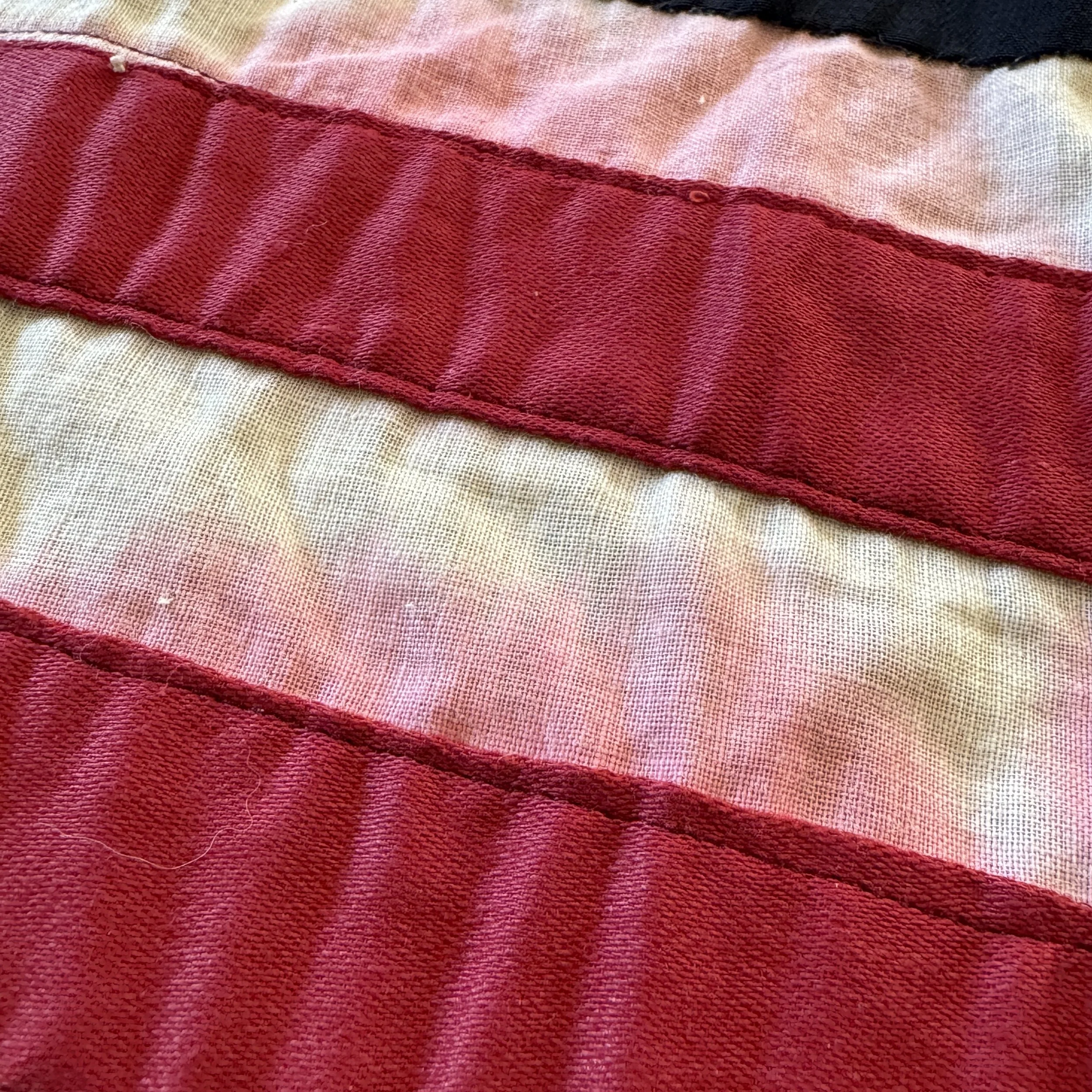

WWII August 1944 Operation Dragoon (D-Day Invasion of Southern France) Handmade U.S. Liberation Flag
Comes with a hand-signed C.O.A.
From: World War II - European Theater
Campaign/Battle: Operation Dragoon—Allied D-Day Invasion of Southern France
Dated: August 1944
Flag Size: 14.5 × 21 inches
Pole Length: 37 inches
This once-in-a-lifetime World War II museum-grade artifact is an original handmade U.S. liberation flag, crafted by French civilians in the days leading up to the liberation of Marseille during Operation Dragoon—the Allied D-Day invasion of Southern France, launched on August 15, 1944. This particular flag was recovered directly from Marseille, which was officially liberated just six days later on August 21, 1944 (D-Day +6), in a moment that marked a decisive turning point in the Allied campaign to reclaim Southern France from German occupation.
The liberation of Marseille was a pivotal event. As the second-largest city in France and a critical deep-water port, Marseille was vital for future Allied logistics and operations. French forces under General Jean de Lattre de Tassigny—including the French 3rd Algerian Infantry Division and Colonial troops—advanced into the city from the north and west. Their entry was met with fierce resistance as German forces had entrenched themselves within key buildings, creating strongpoints across the harbor and urban core. What followed was a brutal campaign of street-by-street and building-by-building combat. Snipers, machine gun nests, and booby traps turned Marseille’s narrow alleys and stone buildings into a deadly maze.
Yet despite the destruction and lingering threat of German sabotage—including the planned demolition of vital infrastructure—the French troops pressed forward. On August 21, 1944, after days of relentless fighting and strategic negotiation with elements of the German garrison, the last strongholds of enemy resistance were eliminated or surrendered. That evening, the city was declared fully liberated.
What ensued was a celebration unlike anything Marseille had seen in four long years. American and French flags flew proudly from balconies and lampposts. Church bells rang across the city skyline for the first time since 1940. Tens of thousands of citizens poured into the streets in spontaneous parades, singing, cheering, and embracing the liberators. The liberation of Marseille not only symbolized a moral victory for the French people but also restored a vital port that would serve as a major resupply route for the Allies through the Mediterranean for the remainder of the war.
In anticipation of the liberation, many civilians—often in secret—crafted handmade Allied flags. These “liberation flags” were created from whatever scraps of fabric could be salvaged in a time of scarcity and fear. Materials varied widely, and due to a lack of access to standard dyes, fabrics, and flag specifications, every liberation flag was a unique expression of resistance and hope. Producing such flags under German occupation was punishable by death, making each surviving example a powerful symbol of courage and defiance.
What makes this specific Marseille liberation flag exceptionally rare is not only its direct provenance to one of the most significant cities liberated during Operation Dragoon, but also the extraordinary preservation of its original improvised wooden pole. Still affixed to the flag with the original small nails hammered into the wood and fabric, this detail is virtually unheard of among surviving liberation flags. The flag itself was machine-stitched from salvaged fabrics in red, white, and blue, with red stripes dyed by hand and white stars carefully hand-painted onto the blue field. The flag’s fabric bears evidence of careful, deliberate construction—each piece sewn together with purpose by civilians who understood the risk, but were driven by the promise of freedom.
This liberation flag is not just a historical artifact—it is a deeply personal and emotional emblem of resilience, crafted in secrecy, raised in defiance, and preserved through decades as a witness to the liberation of a city and the spirit of its people.
Operation Dragoon: The Overlooked Invasion That Liberated Southern France and Sealed Germany’s Fate
Operation Dragoon, the Allied invasion of Southern France, launched on August 15, 1944, was a crucial but often overshadowed component of the broader liberation of France during World War II. While Operation Overlord—the Normandy landings on June 6, 1944—is widely regarded as the pivotal turning point on the Western Front, Operation Dragoon played an equally vital role in accelerating the collapse of German forces in France by opening a second front, cutting off German retreat routes, and enabling a rapid Allied advance toward Germany’s southern border. The operation showcased a remarkable coordination of American, British, Free French, and other Allied forces in one of the most logistically challenging and strategically significant campaigns of the war.
Initially proposed in early Allied planning under the codename “Anvil,” the southern invasion was intended to coincide with Operation Overlord in the north. However, due to a lack of landing craft and the need to focus logistical resources on Normandy, Operation Anvil was postponed. By mid-1944, with the Normandy beachhead secure and Paris on the verge of liberation, the Allies revisited the plan and renamed it Operation Dragoon. The objective was to land forces along the French Riviera, seize key ports like Toulon and Marseille, and drive northward to link up with forces from Normandy, thereby squeezing the German armies into a rapidly shrinking corridor between the Loire and the Rhône Rivers.
The success of Operation Dragoon would not only liberate the south of France but also secure vital ports to support Allied logistics for the remainder of the European campaign. It also forced the German Army Group G to abandon much of France and retreat in disarray, thus achieving one of the key aims of the Normandy landings—splitting and exhausting German forces.
Operation Dragoon was led by the U.S. Seventh Army under Lieutenant General Alexander Patch and incorporated units from the French First Army under General Jean de Lattre de Tassigny. The invasion was spearheaded by three major U.S. divisions: the 3rd Infantry Division, the 36th Infantry Division (Texas Division), and the 45th Infantry Division (Thunderbird Division), many of whom had already fought in Italy and Sicily. These divisions were seasoned and battle-hardened, giving the Allies a highly capable strike force.
Naval support came from a powerful Anglo-American fleet under Admiral Henry Hewitt, while air support was provided by the Mediterranean Allied Air Forces. Airborne troops from the U.S. 1st Airborne Task Force, including elements of the 517th Parachute Infantry Regiment, conducted daring drops inland to disrupt German communications and seize key positions.
In the early morning hours of August 15, 1944, Allied warships unleashed a massive naval bombardment on German coastal defenses, while aircraft bombed enemy strongpoints and transport routes. U.S. infantry divisions stormed ashore at several key beaches along the French Riviera, including Cavalaire-sur-Mer, Saint-Tropez, and Saint-Raphaël. Despite initial concerns, the landings were remarkably successful. German resistance was limited due to a combination of surprise, the weakened state of German forces after months of attrition in Italy and Normandy, and the effective disruption caused by airborne landings inland.
One of the most notable engagements in the initial phase of the campaign was the fight for the port of Toulon. French forces, many of them veterans of colonial campaigns in North Africa, fought intense urban battles to liberate the heavily fortified port. By August 27, Toulon was in Allied hands, and just days later, the port of Marseille fell after a rapid and daring advance. The speed and effectiveness of the French forces in retaking these vital ports was one of the great successes of the campaign. Within weeks, both cities were operational and began receiving tons of supplies critical for sustaining the Allied push into eastern France and Germany.
Following the beachhead’s establishment, U.S. and French forces launched a swift and aggressive pursuit of the retreating German Army Group G through the Rhône Valley. German troops, under the command of General Johannes Blaskowitz, attempted a fighting withdrawal but suffered heavy losses due to Allied air superiority, resistance attacks on their columns, and the difficult terrain.
American units, including the 3rd and 36th Infantry Divisions, pursued the Germans up the Rhône, liberating key cities such as Grenoble and Lyon by early September. Along the way, American forces encountered stiff pockets of resistance, particularly from German rear guards and SS units intent on delaying the Allied advance. The terrain—narrow river valleys, mountain passes, and urban chokepoints—made for brutal, close-quarters combat.
One famous engagement was the battle at Montélimar between August 21 and 27, 1944, where elements of the U.S. 36th Infantry Division attempted to cut off the German retreat. The battle saw bitter fighting as German forces fought desperately to escape encirclement, eventually managing to withdraw northward but leaving behind significant casualties and equipment.
By mid-September, Operation Dragoon had achieved its primary goals. The French Mediterranean ports were secured and operational, and the German Army Group G had been forced into a costly and chaotic retreat. The Allies from the south linked up with units from the Normandy landings near Dijon, creating a continuous Allied front stretching from the English Channel to the Mediterranean.
This link-up completed the strategic encirclement that the Normandy landings had begun. German forces in France were now trapped between converging Allied armies, and their ability to reinforce or maneuver was fatally compromised. The success of Operation Dragoon meant that supplies and reinforcements could now flow through both northern and southern ports, accelerating the final phase of the war in Western Europe.
Although often overshadowed by Operation Overlord, Operation Dragoon was a resounding success. It liberated nearly all of Southern France in less than a month and inflicted heavy casualties on German forces, including the destruction of large portions of Army Group G. The operation also demonstrated the effectiveness of joint Allied operations involving multinational forces, from American infantry and airborne divisions to French colonial troops and British commandos.
Perhaps most importantly, Operation Dragoon showcased how opening multiple fronts can overwhelm even well-entrenched enemy positions. The German High Command, already stretched thin on the Eastern Front and in Italy, could not cope with simultaneous offensives in both northern and southern France.
Moreover, the campaign allowed for the re-emergence of French military strength. The swift and decisive actions of the French First Army under de Lattre not only contributed directly to the liberation of France but also restored French pride and influence in postwar Europe.
Operation Dragoon was a critical component of the Allied strategy to liberate France and defeat Germany. While Operation Overlord receives much of the historical spotlight, the southern invasion was indispensable to the broader campaign. The swift seizure of Marseille and Toulon, the destruction of German forces retreating through the Rhône Valley, and the link-up with Overlord forces collectively dealt a decisive blow to Hitler’s grip on Western Europe. Operation Dragoon stands as a testament to the coordination, adaptability, and sheer determination of Allied forces in one of the war’s most successful—yet often underappreciated—campaigns.